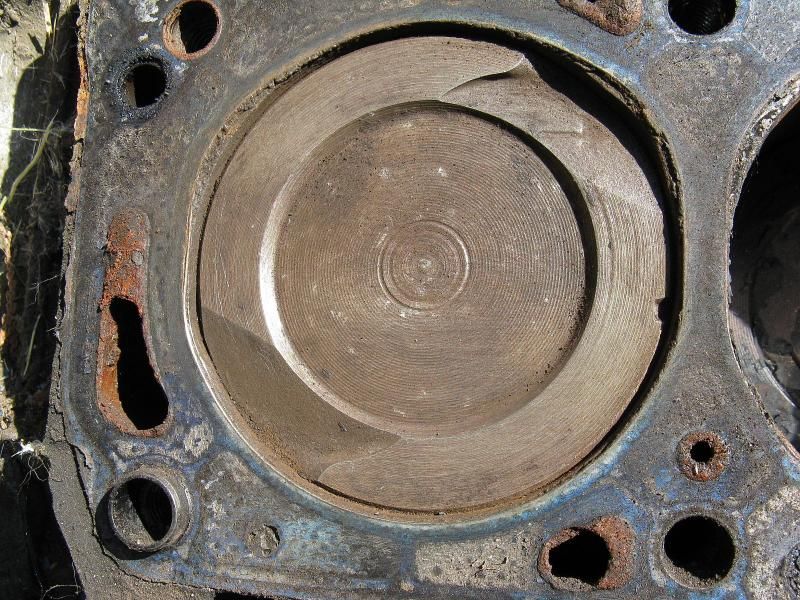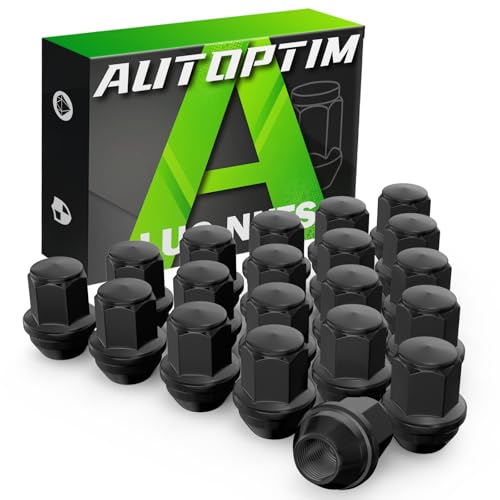detritusmaximus
Well-known member
- Joined
- Sep 21, 2013
- Messages
- 1,360
- Reaction score
- 707
- Location
- US
- My Car
- 1973 Grande #1 looong time ago
1970 Sportsroof #2 almost as long
1971 Sportsroof M-code #3 needs money
2008 GT #4 where the money went
I think I can hear some snickering going on out there in the forum...Yes - Flat top pistons and quench heads will ping on anything less than 93 octane.
No - Dished pistons and quench heads will not ping even on 87 octane.
Having the block zero decked will raise the compression and get you closer to pinging and will cost $ that you do not need to spend to reach your stated goal.
I did some simple math and came up with 8.3 compression on quench heads and 1973 dished pistons. You will be building a 140hp M code 4V Cleveland and I wholeheartedly approve! You might even crack 20mpg with a well tuned carb and distributor.
Your 140hp 20mpg M code 4V Cleveland will run great and pull your Grande down the road just peachy.
If you want it to sound tough then run dual glass packs and it will sound like a NASCAR plus you will pick up another 1/2 mpg or so - FUN!
There is a term for this - it is call ecomodding. Some ecomoders have built "drivable" cars that get 90 plus mpg and they are every bit of a motor head as I am - all be it quite a bit more strange.
Build it! You can do it! Come on build it!
- Paul
You really think only 140hp? The large 4v ports might be a hindrance to low rpm power, but that is what got me thinking about the Aussie/Trick Flow type heads with smaller ports and a quench chamber, the trade off being cash outlay for new, non-original heads and getting more port velocity in exchange (plus 'exotic' imported or aluminum heads to get back the 'wow' factor). Might bring the hp back up and get a better torque curve. The Aussie heads are about 60cc as I recall.
I've been following some of the 'hypermiling' work people are doing. It's amazing how effective combining lots of little improvements in efficiency can add up.
Not a Grande, though, it's that 71 M code sportsroof with the full vinyl top you posted about last winter/spring.
The cheerleading helps, keep it up. How do you look with 'pom-poms'?
More info that helps. Think your cam has anything to do with the mpg? I see you've got 3.50 gears and an overdrive, I'd expect more than 9-10, but how much city/highway?I have flat tops and quench heads (see sig for details). Pings on 91 octane which is the highest commonly available here. Currently I have it mixed to just over 93 octane and it pings just a little. Next tank I am going to bump it up to 94.
I don't drive the car much so I don't mind fussing with the gas. I don't get good gas mileage either, 9 or 10 mpg tops. Except for the pinging it is streetable, idles well but that's because of the Rhodes lifters and they do make a lot of noise.
I am just providing this as reference. I can see that your goal is to avoid some of this (mixing gas, pinging, etc) so it's a good example of what you do not want to do.
It's never as easy as anyone thinks it is...can't buy pistons til I figure out the heads and can't get heads til I figure out the pistons and can't decide on a cam til I know gears which I can't decide on til I know tire diameter. Rinse and repeat. Change one thing and every thing else changes, or maybe not.Most show a Compression Height/Distance of 1.660-1.662 which is about .013-.015 higher than stock. I believe that is because they know that Ford built the engines with the piston down the bore .015 or more. They want to have the piston at or near the top of the bore (close to zero deck). If you have the heads off you can use a dial indicator to determine how far down the bore your piston are. Zero deck is desirable to minimize the quench distance (see previous post). With that information you can do the math to determine what the best piston match is. Plan on having the block decked to get at or near zero deck. Which machine shop you use is absolutely CRITICAL. Find one that has experience building Clevelands, with good outcomes, if possible. Seemingly small things like how deep the front cam bearing is set matter. Nothing about engine building is as simple as some might believe. Do all the math yourself. Verify everything is compatible before you buy parts and measure the parts before they are used. Verify everything as the engine is being assembled. Trust but verify.RottenRalph:
I'm looking at a 5 speed with overdrive, so the 3.0:1 in it now might be as low as I would want to go. I have an idea for an Explorer 8.8 and those are typically 3.55 or 3.73. The 3.55 is usually not a lsd, so if I have to install a lsd/locker, then I could swap to 3.23 also.
What kind of mpg do you get and what kind of driving mix (city/highway)?
Chuck-
I've looked at the S1159 with a supposed CR of 7.9. I've also read that Ford rated the CR higher than it was, so how do the aftermarket/replacement CR specs compare? More questions....
As far as detonation goes shoot for a dynamic compression ratio of about 7.75-8.1. Dynamic compression ratio is not the "end all" of predicting resistance to detonation but, it is a good indicator.
Use a cruising speed vs. rpm calculator to figure out cruising RPM and use that as one consideration when choosing a cam. Chuck
Can't afford to place an order with an engine builder, so I have to figure it all out, but I'm early on the learning curve with the Cleveland. Just researching will occupy my winter.
Thank you for the pic, that helps, too.These are the factory '73/74 pistons:

Last edited by a moderator:














































